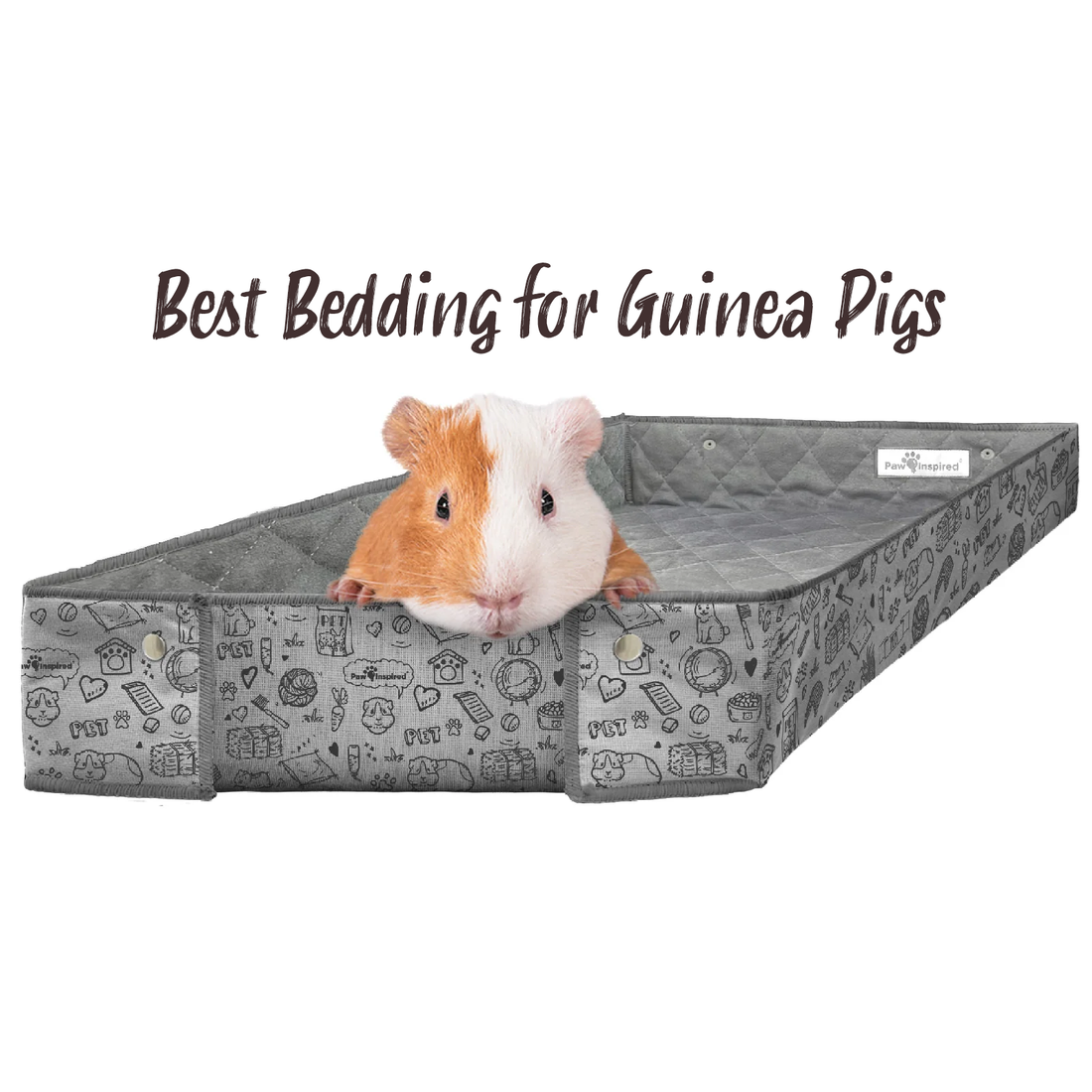How to Find the Right Bedding for You and Your Small Animals
So, you want to find the perfect bedding for your piggies but are not sure what the best options are? Well, together we are going to look through the options and then break down what the best option is for you.PRICE
There are many factors that are at play when you compare the price. Two of the main factors are the initial and reoccurring costs of the bedding and how long the bedding will last. See the below chart for a two-year price comparison.*QUALITY AND MAINTENANCE
-
Paper Bedding
- Pros: Absorbent, soft, and needs to be cleaned every 5 days with minimal spot cleaning
- Cons: Piggie waste is usually left in the cage for longer periods of time. The bedding is non-reusable creating a lot of waste. Some paper bedding is dusty.
Paper bedding is often listed as the best option by most humane societies.¹ When buying paper bedding make sure to look for dust-free, soft, and natural paper. Avoid paper bedding with odors, as these can cause respiratory illness.
-
Wood Shavings
- Pros: Needs to be cleaned every 7 days with minimal spot cleaning.
- Cons: Piggie waste is usually left in the cage for longer periods of time. The bedding is non-reusable creating a lot of waste. Some woods have aromatic oils which can potentially create health problems.
Popular wood shavings used as bedding is aspen, pine, and cedar. The most important thing is to use wood shavings that have little or no aromatic oils. Woods with strong aromatic oils like Cedar should be avoided as they can potentially cause respiratory illnesses and other health problems.³ Pine is less aromatic than cedar but still can potentially cause problems. Some pine bedding is kiln-dried which is processed to leave only minute traces of oil. Aspen Bedding is non-aromatic which is by far the safest choice of wood shavings.
-
Fleece
- Pros: Easy to clean, reusable, soft, and dust-free
- Cons: Requires a lot more cleaning and messes can fall off the edges or under the pads
Fleece liners can be high maintenance, requiring daily spot cleaning. When using fleece liners make sure the fleece is water wicking with a waterproof bottom layer. If your fleece liner does not have a waterproof bottom, make sure to place something underneath it to trap liquids.
-
Disposable Guinea Pig Pads
- Pros: Easy to clean, odor control, and leak-proof
- Cons: Non-Reusable, nibbling, needs to be used with other bedding
Disposable guinea pig pads can be a great way to maintain a clean habitat while saving time. Disposable pads are also helpful for odor control. Yet these pads can be popular to chew on. Use disposable pads with folded edges and an adhesive bottom so your piggy cannot pull them up and chew on the edges. They also work best when used under fleece or bedding. Avoid pee pads with baking soda as this can be a possible lung irritant.
-
Critter Box®
- Pros: Easy to clean, reusable, soft, dust-free, and features raised sides.
- Cons: Requires more cleaning than wood and paper beddings.
The Critter Box® is a unique fleece liner sold by Paw Inspired®. An issue with normal liners is that it is easy for guinea pigs to get behind or under the liners to relieve themselves. The Critter Box® features raised sides to ensure that any waste is kept on top of the fleece liner, making for easier spot cleaning and maintenance.
So which option is best?
All options can provide a safe and happy environment for your piggies. Finding a bedding option that fits your lifestyle and one that you can most consistently maintain will be the best for both you and your pet. If you prefer money savings and don’t mind the frequent spot cleaning then fleece and the Critter Box will be best. If you prefer convenience and can accept the waste being left in the cage for a longer amount of time then paper and wood bedding will be best. Try out different options and see which one you prefer. See which option is both within your budget and lifestyle. This will be the best option for you and you and your little friend.
Please share your comments and options below, we would love to hear from you.
*The cage size used for the calculations is the Midwest Guinea Pig Habitat (47 x 24").⁴ For Wood and Paper Bedding we used the manufacturer's recommendation of changing once a week and filling the cage with a height of 1.5 inches. This makes the total bedding area of the cage 1,692 cubic inches (47" x 24" x 1.5" = 1692 cu in). For the pads, since the bedding does not need to be 1.5 inches tall/thick, the total bedding area needed to cover this cage is 1,128 cubic inches (47" x 24" = 1,128 cu in).
*Brands used for price comparison (price as of 10/26/2021):
Sources & Further Reading
